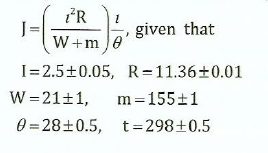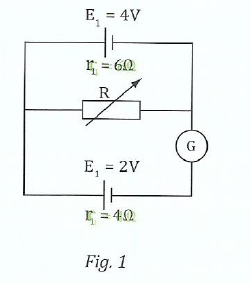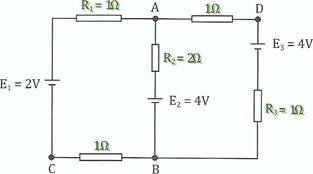THE UNITED REPUBLIC OF TANZANIA NATIONAL EXAMINATIONS COUNCIL OF TANZANIA ADVANCED CERTIFICATE OF SECONDARY EDUCATION EXAMINATIONS
131/1 PHYSICS 1
(For Both School and Private Candidates)
Time 3 Hours Year: 2011
Instructions
1. This paper consists of sections A and B with a total of ten (10) questions.
2. Answer all questions in section A and two (2) questions from section B.
3. Section A carries seventy (70) marks and Section B carries thirty (30) marks.
4. Marks for each question or part thereof are indicated.
5. Mathematical tables and non-programmable calculators may be used.
6. Cellular phones and any unauthorized materials are not allowed in the examination room.
7. Write your Examination Number on every page of your answer booklet(s).
Acceleration due to gravity g = 10m/s 2
Latent heat of fusion of ice L —3.33x105 J/kg
Stefan's constant c=5.7x108 Wm 2K4
Specific heat capacity of copper C=400J/kgK

Permittivity of free space % =8.854x10 12 Fm
Electron charge e=1.6x10-19 C
Plank's constant h—6.63x10 34 Js
Mass of an electron me =9.1x10 31 kg
Mass of proton mp =1.6x10 27 kg
1 a.m.u =93Me V
1. Compute the numerical value of J and error in it for the relation

View Ans
(b) Distinguish between dimensions and unit of a physical quantity. Give one example of each.
View Ans
(c) The wavelength X of a wave associated with a particle moving with momentum p is given by the expression ?=h/p where h is a constant.
Determine the dimension of h;
(ii) Suggest two possible SI units of h.
View Ans
2. (i) Define the term range of a projectile;
(ii) Show that the range R of a projectile is given by R=
(All symbols carry their usual meaning)
View Ans
(b) What are the conditions for a body to execute simple harmonic motion?
(ii) A particle moving with simple harmonic motion has period of 8.0 seconds and amplitude of 5.0m. What is the speed of the particle when it is 3.0m from the centre of its motion and its maximum acceleration?
View Ans
3. (a) Mention the source of centripetal force in each of the following cases:
(i) An object at the end of a string is whirled in a horizontal circle;
(ii) A car travelling round a banked road;
(iii) The moon orbiting the Earth.
View Ans
(b) (i) An object of mass 4kg is whirled in a vertical circle of radius 2m with a speed of 5ms-1 Calculate the maximum and minimum tension in the string connecting the object and the centre of the circle.
(ii) Find the angle of banking necessary for a corner of radius 80m if cars are to travel round this corner at a speed of 120km/h without relying on the frictional forces.
View Ans
4. (a) (i) State the principle of conservation of linear momentum and define the coefficient of restitution.
(ii) Differentiate between elastic and inelastic collision.
View Ans
(b) A ball of mass 10g is dropped from a height of 2.0m to a horizontal ground, it then bounces back to a height of 1.5m. Determine:
(i) The energy lost by the ball when in contact with the ground.
(ii) The coefficient of restitution of the ball and the ground.
View Ans
5. (a) (i) Briefly explain what it means by thermal conduction and define the coefficient of thermal conductivity.
(ii) Ice cubes of mass 5.0g at O OC are placed inside a spherical container having an outside diameter of 40cm, 2mm thick and of thermal conductivity 5.0 x 10-4 Wm IR-I . How long will it take for all the ice cubes to melt if the room temperature is 300C?
View Ans
(b) Two metal rods A and B of lengths 40cm and 80cm respectively having the same cross sectional area of 10cm2 are joined end to end. If the composition is perfectly lagged and the free end of A is fixed at 1000C while that of B is pressed to a point at O OC. Determine:
(i) The junction temperature of the two metal rods;
(ii) The quantity of heat that flows per minute in steady state. (Thermal Conductivities of rods A and B are 360 and 80Wm-1K-1 respectively).
View Ans
6. (a) (i) Define a black body.
(ii) What changes take place in the total energy radiated by the black body and in the energy distribution among the wavelengths radiated as its temperature rises? (Illustrate using suitable graphs). Explain how the information of the changes that take place in the total energy radiated could be obtained from the graph.
View Ans
(b) A copper sphere with a black surface and radius 30mm is cooled to -730C and placed inside an enclosure at a temperature of 270C. Calculate the rate of temperature rise of the surface of the sphere. (Assume the sphere is a black body).
View Ans
7. (a) The equation y =(?t -kx) represents sound wave travelling along the positive x-direction.
What is the physical meaning of the quantities A, y, ? and k?
View Ans
(b) Stationary waves are set up on a wire vibrating at a frequency of 438Hz such that the distance between adjacent nodes is 45cm.
(i) Calculate the wavelength of the waves on the wire.
(ii) If the tension of the vibrating wire is 85N, calculate the mass per unit length of the wire.
(iii) If the diameter of the wire is 0.28mm, calculate the density of the material of the wire
View Ans
8. (a) (i) Define capacitance of a capacitor.
(ii) A capacitor of capacitance 300gF is connected in parallel with another capacitor of unknown capacitance C. The combination discharges through a resistor of 3600 with a time constant of 180 seconds. Calculate the value of unknown capacitance C.
View Ans
(b) What will be the time constant if the capacitors in (a) (ii) above are connected in:
(i) Series? (ii) Parallel?
View Ans
9. (a) In Figure 1 the resistance R is varied until no current flows through the galvanometer G.

(i) What current flows through R? (ii) Calculate the value of R.
View Ans
(b) A standard cell of e.m.f of 1.0186V gives a balance length at 51.2cm on a potentiometer. If the potential drop (p.d) across a standard resistor of 100 in the circuit gives a balance length at 78.4cm. What is the current in the circuit?
View Ans
10. State Kirchhoff's laws of electric circuits.
View Ans
(b) Consider the diagram in Fig. 2 and answer the questions that follow.

Fig. 2
(i) Find the current through R?
(ii) Find the potential difference between points C and D.
View Ans
11. (i) State Coulomb's law of electrostatics.
(ii) An a-particle has a mass of 6.68 x 10 27 kg and charge of +2e. Two a-particles are situated at a distance of 1.5 x 10 Il m apart in vacuum. How does the electrostatic force compare with the gravitational attraction between them?
View Ans
(b) Point charges each of +2 x 10 'C are placed at each of the three corners of a square of side 0.20m. What would be the magnitude and direction of the resultant force on another point charge of -1 x 1019 C If it is located at the:
(i) Centre of the square
(ii) Vacant corner of the square?
View Ans
12. (a)(i) What are matter-waves?
(ii) State de-Broglies's hypothesis and explain briefly how they were verified.
(iii) Calculate the de-Broglie wavelength from the beam of electron whose energy is 350eV.
View Ans
b.(i) Determine the energy of a proton with a de-Broglie wavelength of 10-10m.
(ii)If the wavelength of a proton is twice as long as that of an electron, how much more slowly will its speed be relative to that of electron?
View Ans
13. (a) (i) Define nuclear fission.
(ii) What are the thermal neutrons?
(iii) Determine the amount of energy in MeV released or absorbed in each of the following nuclear reactions:

View Ans
(b) (i) Define half-life as referred to radioactive element.
(ii) The half-life of Radon is 3.8 days. Determine the percentage of atoms decayed after 10 days.
View Ans
14. (a) (i) Define the following terms: Geophysics, Atmosphere, and Epicenter.
(ii) Write down brief notes on the location, composition, and importance of the following: Troposphere, Stratosphere, Mesosphere and Thermosphere.
View Ans
(b) (i) Draw a sketch diagram showing the working parts of a Seismometer.
(ii) Explain how temperature varies with both altitude and depth of the Earth.
(iii) Write down two factors that govern heat flow from the interior of the Earth.
View Ans
 For Call,Sms&WhatsApp: 255769929722 / 255754805256
For Call,Sms&WhatsApp: 255769929722 / 255754805256
 For Call,Sms&WhatsApp: 255769929722 / 255754805256
For Call,Sms&WhatsApp: 255769929722 / 255754805256
 For Call,Sms&WhatsApp: 255769929722 / 255754805256
For Call,Sms&WhatsApp: 255769929722 / 255754805256